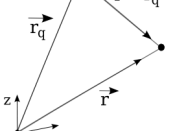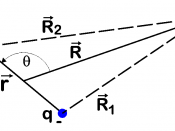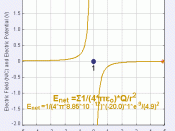Electric Charges And Fields Basic Properties of Electric Charges
The total electric charge on an object is equal to the algebraic sum of all the electric charges distributed on the different parts of the object The total charge of an isolated system remains constant with time. All observable charges are always some integral multiple of elementary charge, e (= ± 1.6 à 10â19 C)
Coulomb's Law âTwo point charges attract or repel each other with a force which is directly proportional to the product of the magnitudes of the charges and inversely proportional to the square of the distance between them. âF=Kq1q2r2,K=14Ïε0=9Ã109 Nm2C-2
Principle of Superposition It is based on the property that the forces with which two charges attract or repel each other are not affected by the presence of a third (or more) additional charge(s). The total force on a given charge due to number of charges is equal to the vector sum of the individual forces exerted on the given charge by all the other charges.
Electric Field â It is the space around a charge, in which any other charge experiences an electrostatic force.
Electric Field Intensity The electric field intensity at a point due to a source charge is defined as the force experienced per unit positive test charge placed at that point without disturbing the source charge. Electric field due to a point charge at distance r from it is E= q4Ïε0r2 Electric field due to a number of charges is found by adding the individual electric fields vectorial ly.
Electric Field Lines An electric l ine of force is the path along which a unit positive charge would move, if it is free to do so. Properties of electric field l ines
They are continuous curves without any breaks They cannot cross each...


